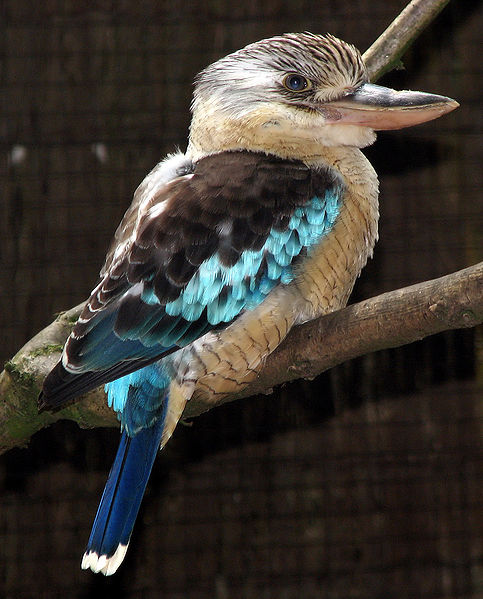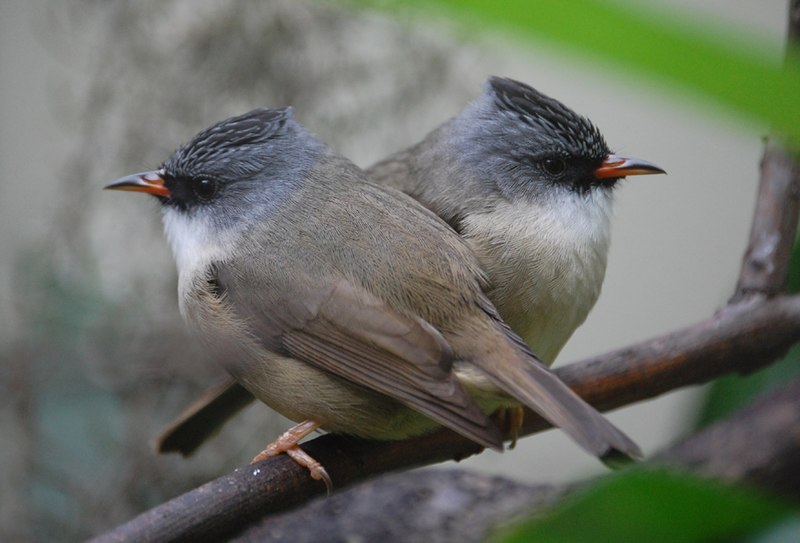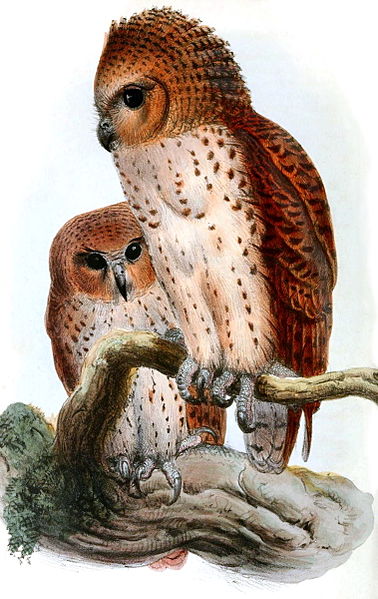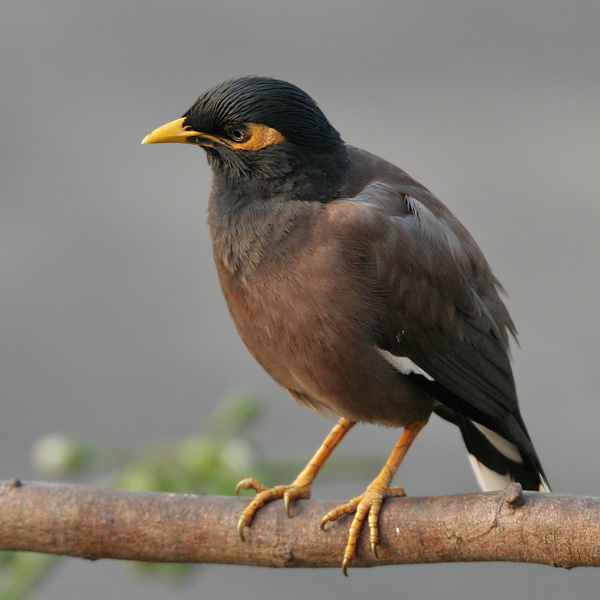 In years past the maniacal call of the Laughing Kookaburra, Dacelo novaeguineae, was often used as a backdrop for movies set in “the African jungle”…despite the fact that the bird dwells in dry, open woodlands, and even cities, in Australia. I had always been fascinated by our own Belted Kingfisher, and longed to meet this largest member of the Kingfisher Family (Alcedinidae) in person. I was surprised when my chance came well before I began working in zoos – on a visit to a private bird-keeper near NYC!
In years past the maniacal call of the Laughing Kookaburra, Dacelo novaeguineae, was often used as a backdrop for movies set in “the African jungle”…despite the fact that the bird dwells in dry, open woodlands, and even cities, in Australia. I had always been fascinated by our own Belted Kingfisher, and longed to meet this largest member of the Kingfisher Family (Alcedinidae) in person. I was surprised when my chance came well before I began working in zoos – on a visit to a private bird-keeper near NYC!
Not So Wild After All
It seems that Laughing Kookaburras are well-established in private aviculture in the USA, and not that hard to come by. This makes sense – they are impressive, interesting birds that tame easily – but it first came as a surprise to me as they seem so “wild”.
But it turns out that they are not all that “wild” after all…in their native Australia, suburban Kookaburras often swipe sizzling-hot meat from barbeque grills! A few albinos have even turned up, and a relative, the gorgeous Blue-Winged Kookaburra, Dacelo leachi, is also occasionally offered for sale.
Keeping Kookaburras
I cared for a pair of Laughing Kookaburras for some years, and found them to be most delightful and interesting. They became quite docile, were eager to feed from the hand, and always greeted me with a scaled-down laugh – a “chuckle”, if you will – when I arrived.
While usually reserved for announcing their territory, Kookaburras also give their trademark call when excited. When I wanted the Kookaburras to perform for visitors, I had merely to show them a treat and then make a show of walking away with it…or, worse yet, offering to their neighbor, a cantankerous Cassowary (they did indeed seem jealous!).
Both would cock their heads at me in that most beguiling way they have, and then let loose with a barrage of hysterical calls. Kookaburras perch very upright and with chests “puffed out”, as do all kingfishers, but my pair seemed to sit even “prouder” when they had “forced” me to part with a few mice (their favorite).
Diet

My Kookaburras lived well into their 20’s on a diet comprised of mice, earthworms, locusts, chicks, hard-boiled eggs, fish and crayfishes. Wild Kookaburras also take snakes, lizards and frogs. Many keepers provide raw meat or commercial Bird-of-Prey Diet, but whole animals are preferable foods by far.
Cautions
I feel that Laughing Kookaburras are well-worth your time if you can properly provide for them. Despite their fine points, however, Kookaburras are not for everyone. They stand almost 20 inches high and have a broad wingspan…no indoor parrot cages for these brutes!
Height – 15 feet or more – is especially important in their aviary…like all kingfishers, Kookaburras hunt by plunging down on their prey from above. And their calls, which carry very far, are a force to be reckoned with.
Some Natural History
The 4 Kookaburra species (the taxonomy of a 5th is in question) are classified as “Forest Kingfishers”, and placed within the subfamily Daceloninae. The common name is derived from the Wiradjuri People’s term for their unique call.
Unlike their relatives, most Kookaburras frequent dry habitats. The Laughing Kookaburra is much loved in its native eastern Australia, and has been introduced to southwestern Australia, Tasmania and Kawau Island (New Zealand).
Further Reading
Kookaburra Natural History (National Zoological Park).
Video: tame Kookaburra laughing it up
Laughing Kookaburra image referenced from wikipedia and originally posted by Richard Taylor
 The Black-Chinned Yuhina, Yuhina nigrimenta, is one of the few small non-seedeaters that have gained favor in private bird collections. While its dietary needs are not easy to meet, the Yuhina is an excellent choice for experienced keepers looking for an unusual, active bird that is not often seen in US collections.
The Black-Chinned Yuhina, Yuhina nigrimenta, is one of the few small non-seedeaters that have gained favor in private bird collections. While its dietary needs are not easy to meet, the Yuhina is an excellent choice for experienced keepers looking for an unusual, active bird that is not often seen in US collections. That Bird Blog – Bird Care and History for Pet Birds
That Bird Blog – Bird Care and History for Pet Birds





